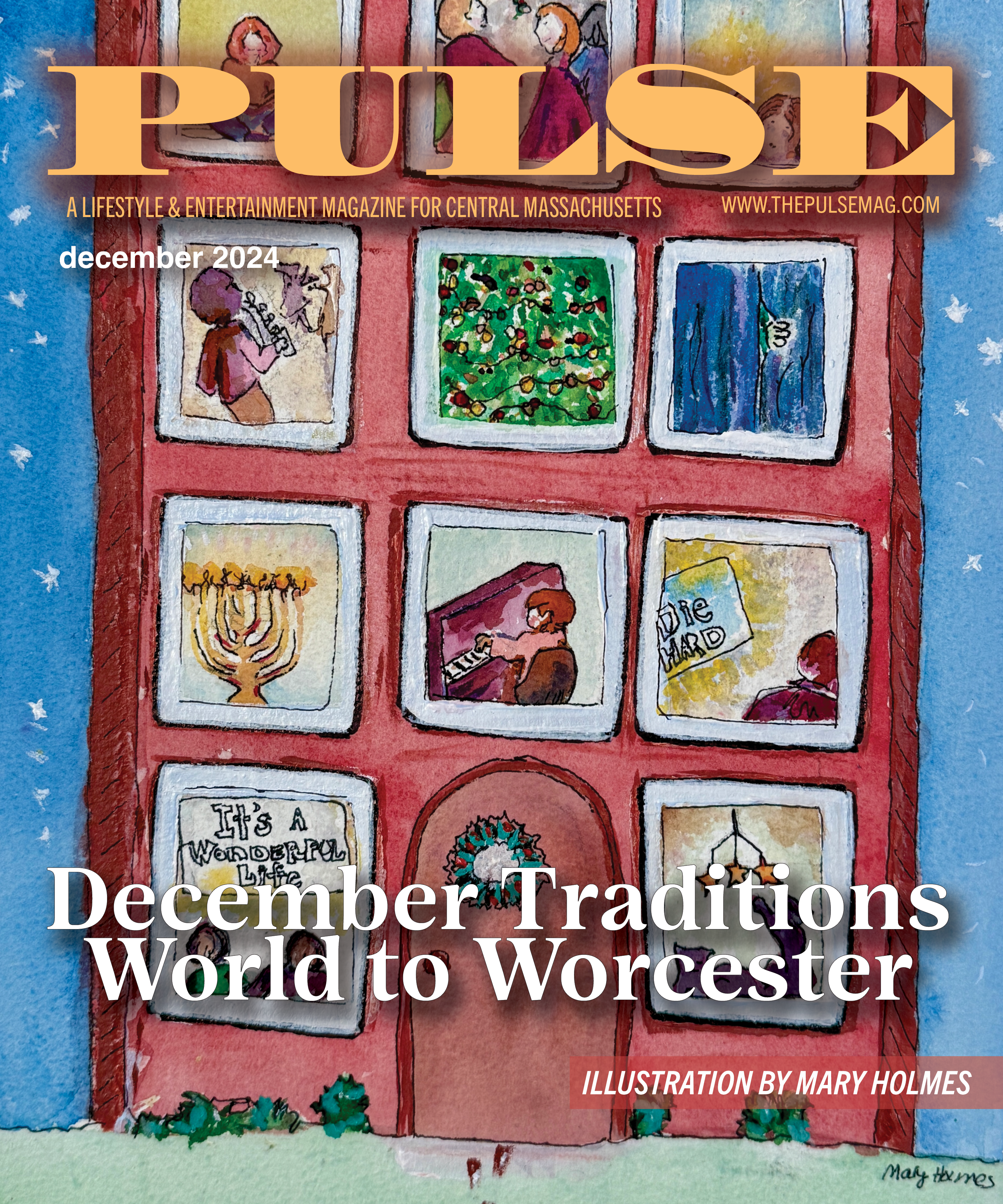Everything You Need to Know about The Sport That’s Taking Over Winter
By Kimberly Dunbar
Everything comes from somewhere. But who would have guessed that the fastest growing sport in America was born from sliding down snowy hills on cafeteria trays.
Snowboarding, a sport some consider relatively new to the sports scene, dates back to the mid 20th century. In 1965, Sherman Poppen invented the “Snurfer” by nailing together two skis. Five years later, Dimitrije Milovich developed the first modern-looking snowboard after sliding down hills on cafeteria trays in upstate New York. He then patented his idea as a snowboard, combining the design of a surfboard with the concept of downhill skiing. Then in 1975, Milovich and his company, Winterstick, were featured in the March issue of Newsweek, giving boarding some of its first national exposure. By the 1980s, Mike Olson and Jake Burton Carpenter came onto the scene, modifying the “Snurfer” and developing new kinds of snowboards. Then came Michigan’s annual Snurfer contest and a true milestone, snowboarding appearing in its first national commercial (for Lebatt’s beer).
While the boards themselves were evolving, so was the popularity and competitiveness of the sport. In 1981, modern competitive snowboarding began in Colorado, and a year later riders from all over the country started competing against each other. Snowboarding became more diverse with the addition of the halfpipe, the International Snowboarding Magazine, and a host of European regional events. In 1986, the World Snowboarding Championships moved to Colorado, and American resorts begin to offer organized snowboarding instruction. About that time, too, the establishment of the North American Snowboard Association (NASBA) and the creation of a manual for snowboard instructors both indicated that snowboarding was beginning to be taken more seriously. In 1987, it received corporate sponsorship, and two years later the NCAA adopted snowboarding as a sport, giving rise to club and varsity teams all over the country. The Snowboarding Hall of Fame is established in 1990 to document the sport’s short history and the International Snowboard Federation took the place of NASBA. By this time, athletes from other sports like surfing and skateboarding started crossing over into to snowboarding.
Snowboarding’s biggest victory came in 1994, when the International Olympic Committee declared snowboarding an official Olympic sport. Ever since the sport’s debut in the 1998 Nagano Olympics, it has been growing steadily. According to American Sports Data (ASD), snowboarding has increased 44% since the mid 1990s, now claiming over 7.2 million participants. And more and more people of all ages are beginning to notice the unique and creative aspects of the sport. Snowboarding is not only easier than skiing, it is less expensive, requires less equipment, and allows boarders more creativity during a session in the snow.
So look out skiing, snowboarding is taking over as the #1 winter sport!
Wachusett Mountain Ski Area in Princeton is Central MA’s biggest winter playground. It offers 20 trails for skiing and snowboarding, serviced by eight lifts on a 1,000 foot vertical drop. Wachusett offers a variety of lessons and programs for snowboarders and skiers during the winter months. The Mountain also hosts the annual Rail Jam in December, where snowboarders from around the region compete for a $12,500 purse and a spot in a national event. For more information, visit www.wachusett.com or call 978-464-2300.
Whether you’re a beginner or advanced snowboarder (or skier), Ski Ward has something for you: Nine trails, four lifts, mogul field, 1/4 pipe and a terrain garden that provide enough challenge to all riders, day or night. Ward features state-of-the-art snow making and grooming equipment, so log onto www.skiward.com or call 508-842-6346.
Other Snow Boarding Destinations:
Nashoba Valley Ski Areas, Westford, MA, 978-692-3033, 7 trails, 9 lifts, and tubing grounds
Blue Hills Ski Area,Canton, MA, 781-828-5070, 8 trails, 4 lifts
Bradford Ski Area, Haverhill, MA, 978-373-0071,13 trails and glades, 9 lifts, and terrain ground
Snow Boarding Tips
*When it comes to clothing, layering is the most important thing to remember. For pants, start with a layer of thermal long underwear to keep warm, then put on your snowboarding pants. For your top, never start with a cotton layer first. Cotton absorbs and retains your sweat and it will make you colder. Start with a Polypropelyne undershirt and go from there. Continue with a thick wool layer and finish with a jacket.
*Gloves are a must, with or without a liner inside. Wear two pairs of socks ~ wool or silk, not cotton! Some snowboarders even invest in a neckwarmer to keep their neck and lower face warm.
*For eye protection, clear goggles are standard. For boarding at night or on a cloudy day, yellow- tinted goggles are better. If you are boarding in the sunshine, a dark tint works better.
* Boots can be either hard or soft. Hard boots give you more support, but soft boots are more popular because they are more comfortable; manufacturers are constantly improving the support in soft boots, too, while maintaining that element of comfort.
*Make sure you don’t forget your helmet!
*Keep a screwdriver and an Allan Key with you in your pockets in case your equipment breaks or you need to tighten your bindings.
*Bring water with you. Invest in an insulated camel back. It slings over the shoulder and will keep your water in liquid form.
*Also carry a Power Bar or another snack with you, as you will get hungry during your adventures. At ski-resorts a bowl of chili and other food are expensive, so bring a snack!
…And once you’re ready to really get into snowboarding, here are some terms that will make you sound like a pro!
Bail ~ a term used to describe crashing or falling, e.g. “He bailed and landed on his head,” or to describe escaping out of a trick. Also use the term crater.
Boost ~ used to describe catching air off of a jump, e.g. “He boosted ten feet out of the halfpipe.”
Chatter ~ when the snowboard vibrates unnecessarily, usually at higher speeds and through turns. Racers are always trying to reduce chatter in their boards so they can stay in control.
Corduroy ~ the finely-ridged snow surface left when a Snowcat has just groomed a trail ~ very nice for laying out clean turns.
Cruiser Run ~ What you call making a relaxed and mellow run on a fairly smooth trail.
Flail ~ a term used to describe riding badly and out of control.
Grommet (Grom) ~ another name for a young snowboarder, especially one who is very “in” to snowboarding.
Jib ~ the act of riding on something other than snow, i.e. rails, trees, garbage cans, logs.
Kink ~ When riding halfpipes or other jumps, boarders may come into contact with abnormal/rough-transition surfaces. These kinks cause ride problems.
Late ~ a term used to describe incorporating something into a trick just before its completion and landing, i.e. a Method to Late 180 would mean doing a method air and – at the last possible second – rotating 180 degrees and landing fakie.
Nose ~ The front tip of the snowboard.
Nose Grab ~ The front hand grabs the nose of the snowboard
Poach ~ if the Halfpipe is closed, or the powder field is roped off, and you rode it anyway… you poached it.
Session ~ any given time that someone spends snowboarding, e.g. “That was a good halfpipe session, but the powder session was even better.”
Sketching~ riding along precariously and almost falling.
Snake ~ someone who cuts in front of you in the lift line or drops in front of you in the halfpipe.
Stick ~ 1. A snowboard. 2. A term used to describe a good landing, e.g. “He stuck a huge Method Air off of that jump.”
Stomp ~ another term to describe making a good landing, e.g. “He stomped that McTwist.”
Tail ~ The rear tip of the snowboard.
Tail Bonk ~ To hit an object with the tail of the snowboard.
Tail Grab ~ The rear hand grabs the tail of the snowboard
Tail Wheelie ~ To ride solely on the tail of the snowboard with the nose in the air.
Tweaked ~ 1. Performed with emphasis on the style in a trick. In other words, if someone “tweaked out a method” they would grab hard and create an emphasis of the maneuver such that their ankles or other joints may appear bent
For a complete list of high-level snowboarding terms, head to www.tqnyc.org/NYC041062/






